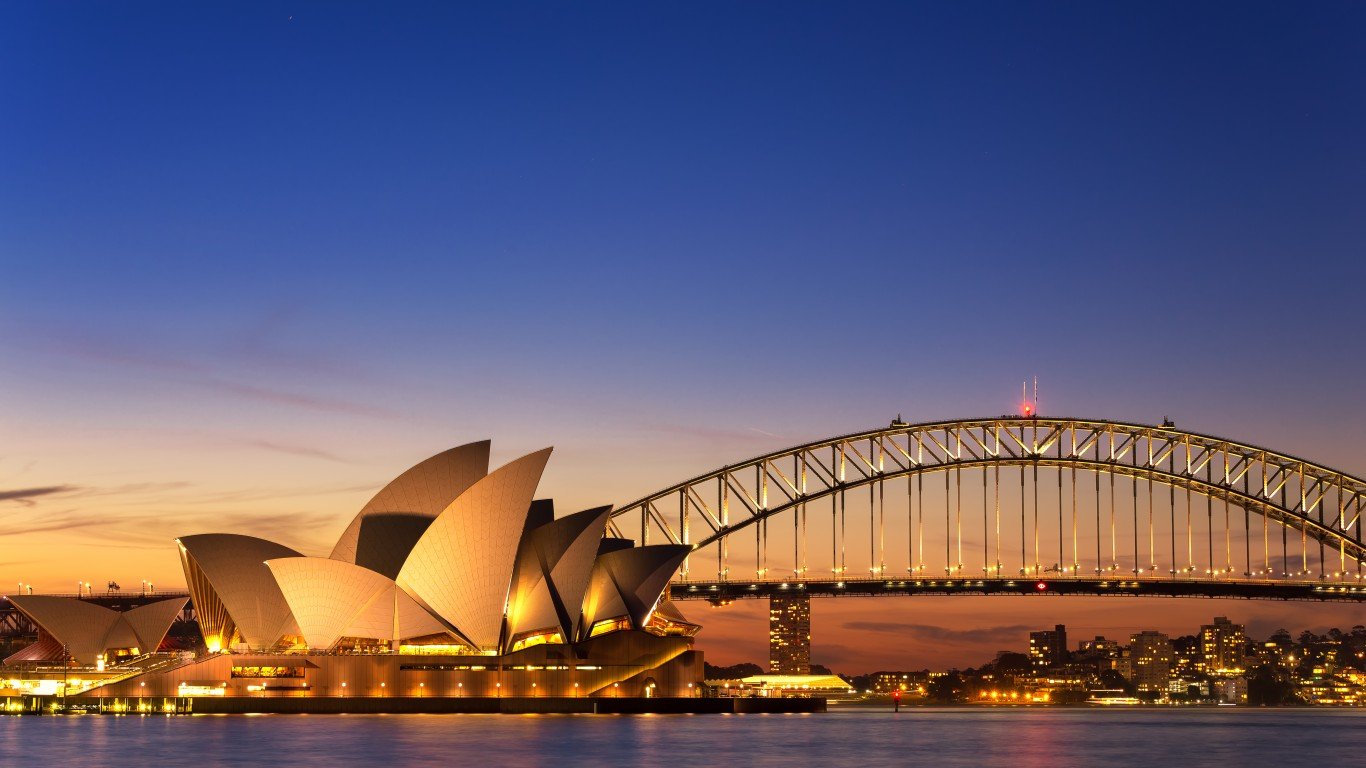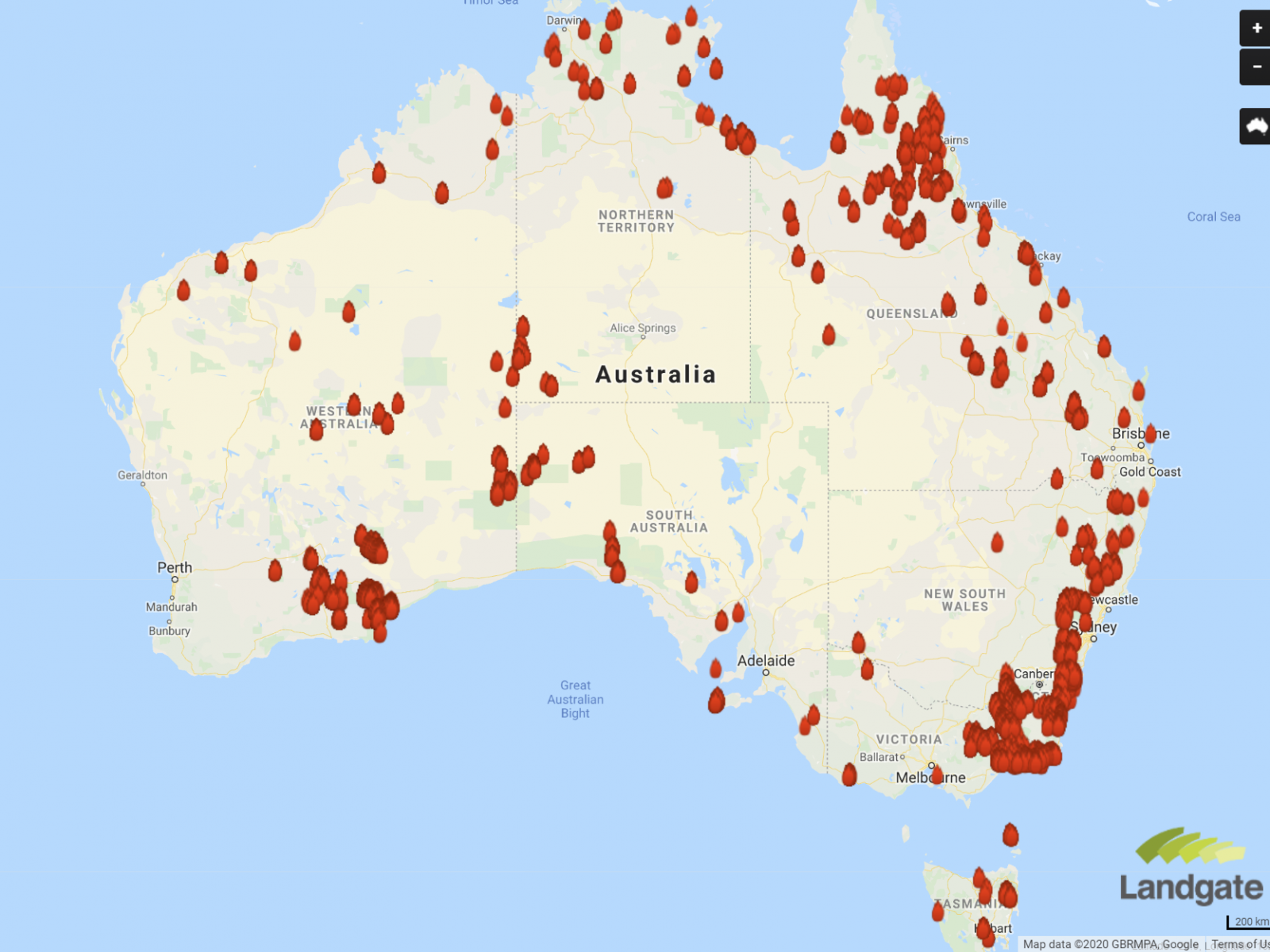

Last Friday, Tourism Australia, the country’s official government tourism department, issued a statement on the bushfires that have ravaged the country. After offering condolences to Australians “impacted by the fires” and thanking the largely volunteer firefighters who have battled the blazes, Tourism Australia comments that “many areas are unaffected and most tourism businesses are still open.”
That’s true, as far as it goes. The country, which comprises nearly 3 million square miles, is almost as large as the Lower 48 U.S. states (3.12 million square miles), and the fires had burned about 12 million acres as of last Friday, according to a report in Newsweek. That is about 18,750 square miles, or 50% more land area than the state of Maryland. The California wildfires of 2018 burned about 2 million acres, or 3,125 square miles.
Among the hardest-hit parts of the country is the province of New South Wales, the location of some of the country’s largest cities: Sydney, Melbourne and Canberra. It already had one of the forests at the greatest risk of extinction.
The following map from the Western Australian government’s land information agency, Landgate, shows the locations of active bushfires last Friday.

Tourism is big business in Australia. Nearly 4.5 million vacationers visited the country in the 12-month period ending in September 2019, the last month for which data is available, and spent $16.9 billion. Half of those were first-time visitors and half were returnees. On average, each visitor stayed for 21 days and spent nearly $4,300 per visit or more than $200 per day. Tourism accounted for around 0.01% of the country’s 2018 $1.43 trillion gross domestic product.
Adding in visitors to the country who are there on business, the total number swells to 5.47 million. Those additional business travelers spent $4.2 billion (nearly $400 per day) and stayed an average of 11 days.
Last week, officials of New South Wales declared a state of emergency extending until Wednesday, January 8. Thousands of residents have been evacuated, and 24 people across the country have died from the fires.
Authorities estimate that around 500 million animals have died from the fires in New South Wales alone. One estimate puts koala deaths at roughly 8,000 since the fires started. Government officials estimate that the country’s koalas create 9,000 jobs and contribute between $1.1 billion and $2.5 billion to Australia’s economy every year. And the country is one of those doing the most to protect endangered species.
The weather forecast for New South Wales calls for a drier and hotter January, and the country’s Bureau of Meteorology notes that while the outlook for drier conditions is less severe than earlier forecasts, “several months of above average rainfall would be needed to see a recovery.”
As with wildfires in California and the American West, the arrival of winter could be the only way to extinguish the country’s bushfires.
Sponsored: Attention Savvy Investors: Speak to 3 Financial Experts – FREE
Ever wanted an extra set of eyes on an investment you’re considering? Now you can speak with up to 3 financial experts in your area for FREE. By simply
clicking here you can begin to match with financial professionals who can help guide you through the financial decisions you’re making. And the best part? The first conversation with them is free.
Click here to match with up to 3 financial pros who would be excited to help you make financial decisions.
Thank you for reading! Have some feedback for us?
Contact the 24/7 Wall St. editorial team.



